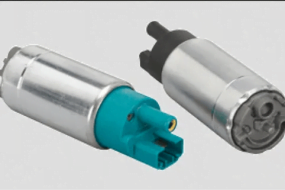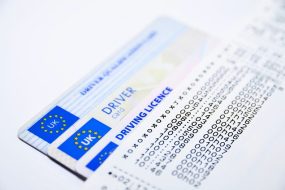
Often as you drive along roads, you would come to a point where the road is flooded with water, perhaps due to heavy rain, or lack of drainage system on both sides of the road, or potholes on a bad road.
One way or another, the road has been flooded with water, and there is no other route to take except the flooded one, so you have no choice but to drive through the flooded road, making your car more or less submerged in the water.
Chances are that after your car has driven in and out of the water, some of it may lodge in corners of your car, or even entered places in your car that don’t have any business with water. So, what should you do after driving through water?
After driving through the water, you need to check for damages caused by the water. You can do so by checking the compartments under the car such as the exhaust pipe etc. You should also check the lights, brakes, and suspension joints, your car interiors including the gas tank, and fluids.
What to do after Driving through Water
After driving through water, you should:
1. Check the Compartment Under Your Vehicle
You must check your engine, undercarriage, your vehicle’s bumpers, and also the radiators to make sure dirt from the muddy, flooded road hasn’t lodged inside of them.
Muds tend to stick and take strongholds over time. If they are not checked and cleaned out, it might lead to spending a lot of money on repairs after causing avoidable corrosion.
You must also check your exhaust pipe. Imagine water entering your exhaust pipe after driving through the water. You should ensure that it doesn’t cause problems for you.
2. Check the Lights, Brakes, and Suspension Joints
The lights, being electric can get damaged due to the water that has entered your car. If your car entered a large body of water, it first comes in contact with your bumper, then the lights of your car, before entering completely.
Therefore, you have to get the lights checked. While you are at that, you must check the brakes as well as the suspension joints as dirt might have also accumulated inside them and stir them away from efficiency, causing them to malfunction and not work as they should, putting yourself and other road users at risk.
It is very important to test brakes at low speeds after driving through water water may affect your brakes
3. Check Your Car’s Interiors
Driving through water that is too high or while driving through water, someone overspeed and splash water into your car interior, you run the risk of damaging the interiors of your car.
You should check the seats, the carpets, several compartments on the floor that is prone to withholding humidity, the body of your car too, and if dirt has gotten under those readymade carpets.
If after checking, you find out that the interiors are damp, and humidity has been retained, it is not enough to just leave the car and let it dry out.
If you do that, mold and fungus can grow in the cabin of your car which will, in turn, produce bad odors and cause you and other frequent users of the car sick.
You need to hire professional cleaners to do your job and ensure that your car is professionally cleaned, neat, and spotless.
4. Check the Fuel Tank and the Fluids
There is something called fluid contamination in vehicles. It is when other particles such as water, urine (how on earth will urine get into a gas tank?), or any other material that isn’t naturally a part of the fluid your car needs mixes with the fluid. It causes contamination.
In this case, driving through water can make the water get into your fuel tank and mix with the fuel, or mix with the engine oil in your engine that is supposed to ensure smooth gliding of parts upon parts. If water mixes with these different fluids, it causes contamination.
You have to check whether this has happened by opening your fuel tank to check the fuel and pulling out the dipsticks to check the engine oil.
Once you have ascertained that your fluids have been contaminated, you must call your mechanic to get it fixed. You might need to replace all the fluids in your car, most especially your engine oil.
Should You Drive Through Water?
Yes, you can drive through water especially with big vehicles such as SUVs. Even though all cars can drive through water, different kinds of cars have different resistance to water, when they drive through it.
For instance, where cars of average size might be completely submerged and get destroyed, SUVs tend to stay a little bit above board, and then other vehicles like trailers just move on like it never happened. Irrespective of the size, though, you can drive through water.
However, you need to understand that water can tamper with the efficiency of your car if it gets into the gas tank, and it can completely damage your car once it gets into the engine as well. This is because your car was produced to drive on clear, smooth roads, and not to swim in the mighty ocean.
Therefore, as much as you can, always ensure you avoid driving through water. Stay away from flooded roads and your car won’t be at risk of getting damaged by water.
Things to Know Before Driving Through Water
As much as you can, stay away from flooded roads and do not drive through water. However, there are many times that it is unavoidable. In situations like that, you are expected to know certain things before driving through water:
Be Patient and Take Turns
You must approach this situation with the calmest mind possible. You have to create a single lane with other cars on the road as you never know the level of the other parts of the road that water has submerged.
The safest option is to be patient and take turns going through the water on a single line, to avoid falling into potholes or even drainages that have been submerged.
Target the Centre of the Road
You should drive at the center of the road as it is usually the safest side of the road to drive when the road has been completely flooded. This is because there might be deep drainages on either or both sides that you might not see due to the flood.
So, the safe option is to drive through the water at the center of the road. Even if there were potholes, it is a safer bet to stumble on them than to fall into a drainage.
Measure How Deep the Water is Before Crossing
This is to ensure that your car is just right to drive through. Don’t drive through the water just because other cars are driving through. Theirs might be a lot bigger and won’t even feel the effect of the water.
Therefore, ensure that the water, compared with the size of your car, is very shallow. Another tip is that once the water is above your wheels, you must never try to cross.
Drive Gently and in Low Gear
You won’t even have a choice but to drive slowly, gently, and patiently, as you would be on a single file with the rest of the cars. Also, driving in a lower gear will put the vehicle at as low a speed as possible.
Finally, take care of your brakes after driving through. As soon as you have conquered the water and are already on the other side, you need to ensure that your brakes are dried, and you can do this by driving slowly and braking gently.
Final Thoughts
If you can, make it your mission to never drive through deep waters and flooded areas, however, whenever you do drive through, find the nearest stop and check your car thoroughly before continuing your journey.
Check the interior of the car, the lights, the brakes, the fluids, the engine, etc. Once you discover any abnormality, report it to your mechanic. This will help you keep your vehicle at maximum efficiency.









